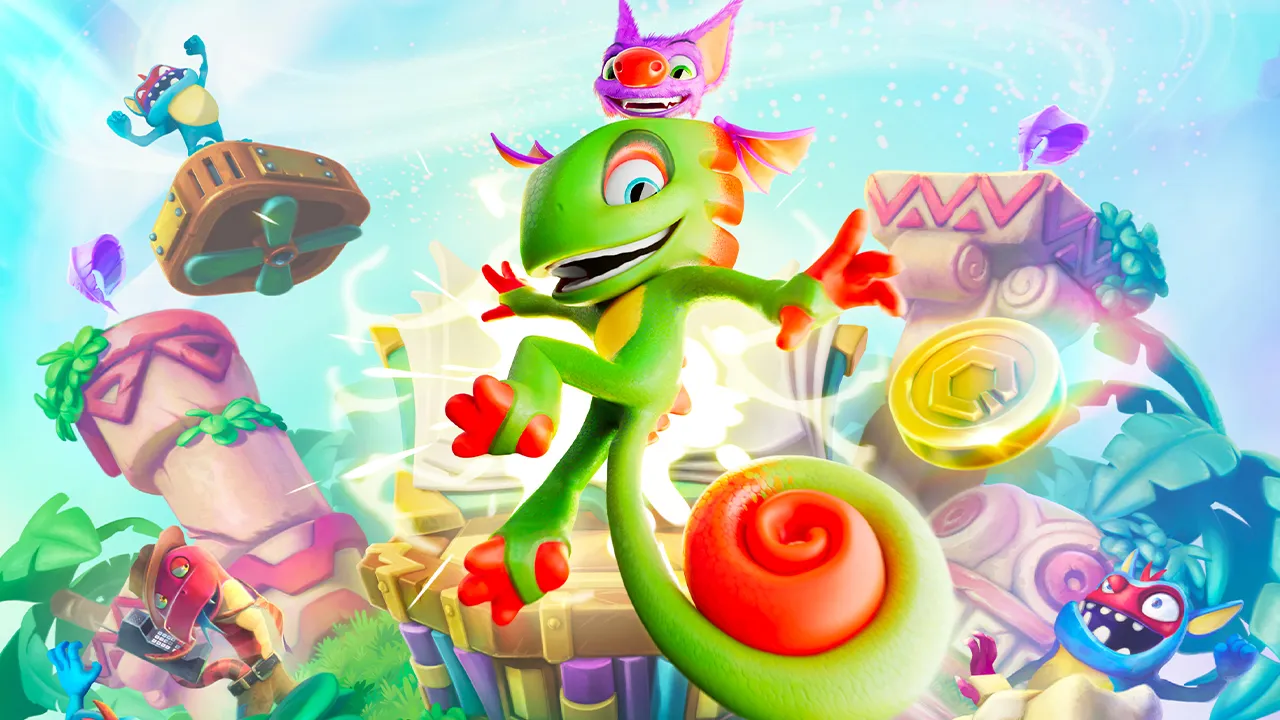The 3D platformer genre has always lived on nostalgia. From Banjo-Kazooie to Super Mario 64, these collectathons defined an era of joyfully aimless exploration and puzzle solving. When Yooka-Laylee released back in 2017, developer Playtonic Games was made up of many former Rare developers set out to recapture that magic. The game was full of charm but also weighed down by clunky mechanics and uneven design. Now, eight years later, Playtonic returns with Yooka-Replaylee, a full remake that tries to refine and re-energize the original.
The result is a fascinating and exciting. Yooka-Replaylee doesn’t just polish the visuals it rewrites the flow of progression, overhauls its economy, and retools the controls to feel more modern. It is a big step forward and a reminder of why the genre remains so beloved to many.
Yooka-Replaylee once again stars Yooka, the friendly chameleon, and Laylee, his sarcastic bat companion. The story remains the same: the evil Capital B has stolen the magical “One Book,” scattering its golden “Pagies” across multiple worlds. Flaunting his wealth he has unleashed his army to make sure he succeeds by any means possible. Our heroes must recover the Pagies and put the book back together, restoring order and balance.
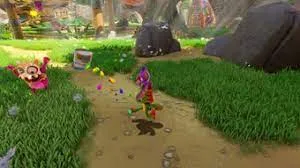
The premise isn’t new, but the presentation is much improved. The game’s opening sequence has been completely redesigned. Instead of a sluggish tutorial loaded with dialogue boxes, the remake introduces players through a hands-on, interactive tutorial, teaching core moves through play rather than explanation. You begin with most of Yooka and Laylee’s abilities unlocked from the start rather than progressively unlocking them as you progress which makes for a quicker and snappier experience.
The world opens up naturally, encouraging discovery instead of restriction. The story still has that cheeky, meta-humor Playtonic is known for, full of fourth-wall jokes, silly puns, and self-aware writing which sets the tone and charm of all these loveable characters.
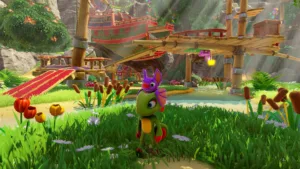
Collecting things has always been the beating heart of Yooka-Laylee, and Replaylee refines that system rather than Overhauling it completely. Pagies still serve as the main objective, earned by completing puzzles, mini-games, and challenges and time trials scattered throughout the large worlds. Quills return as the common collectible currency, while new additions like Q.U.I.D.S. and Cosmetic Tokens help diversify rewards.
The economy behind these collectibles has also changed dramatically. In the 2017 version, Quills were used to purchase new moves from the snake merchant Trowzer. That mechanic is gone and now most moves are available early so Quills now act as currency for cosmetic upgrades and “Tonics,” small modifiers that alter gameplay.
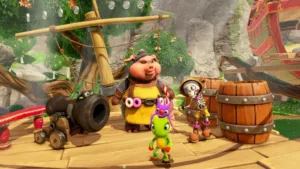
Tonics can be found and equipped through Vendi, a talking vending machine who acts as the game’s quirky shopkeeper. She sells dozens of tonics which enhance gameplay (like increasing roll speed or adding double jumps) as well as making tonics that can make the experience harder (1 hit KO, harder to kill enemies), while others purely affect visuals (like retro pixel filters or shiny gold skins). You can even equip multiple Tonics at once, allowing for deep customization if you wanted to mix both the visual and mechanical tonics together.
This system makes collecting feel more purposeful and personal. Instead of gathering items just to progress, you feel like you are earning tools that shape how you play. The downside is that there’s almost too much to gather whilst not a massive problem at times, the world feels oversaturated with shiny objects. It’s fun to collect, but you may find it easy to get distracted or overwhelmed.
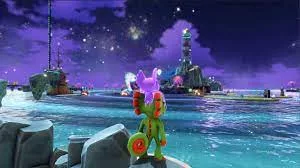
With most moves unlocked from the start it makes exploration and combat a breeze learning different combinations and navigational skills you end up finding yourself lost for hours just wanting to stay in a certain area trying to collect everything possible before moving on. Exploration feels freer and more cohesive due to each world being fully open from the start, filled with secrets, hidden areas, and clever environmental puzzles. Thankfully, World exploration is also faster thanks to fast-travel points and an updated map interface. You can now track collectibles and objectives directly from the menu, which is great for those wanting to become a collectible completionist.
Visually, Yooka-Replaylee is stunning compared to the original. Textures are sharper, lighting is richer, and the color palette has more depth without losing its cartoony charm and not to mention 4K and 60FPS. Character models have been slightly redesigned for expressiveness, giving both heroes and NPCs livelier animations which help with the charm and humour in sections as well as making the worlds you find yourself in stunning and making you want to explore every corner.
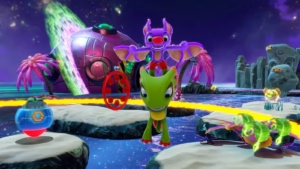
No Yooka-Laylee experience would be complete without bumping into Rextro, the lovable, low-poly dinosaur who lives to celebrate the golden age of retro gaming. Rextro’s arcade cabinets return in Yooka-Replaylee, and like much of the remake, his section has been given a fresh coat of polish in both mechanics and fun dialogue which was a prority for me to find his tokens to play on his arcade cabs for Pagies.
The soundtrack is equally impressive. Playtonic brought back composers who re-recorded much of the original score with orchestral flair. The result is a soundtrack that feels nostalgic yet fresh and reminiscent, full of playful melodies that evolve as you explore.
Yooka-Replaylee is exactly what its title implies a chance to replay, rethink, and rediscover. It’s not a simple remaster but a genuine reimagining that respects its roots and is a treat for anyone old or new.
Overall
-
CX Score - 80%80%
Summary
Pros
- Polished Presentation and Audio
- Stronger Level Design and Collectible Economy
- Bottomless Collectible Fun
Cons
- Reduced Sense of Progression
- Pacing Variability Between Worlds
- Minimal New Content

